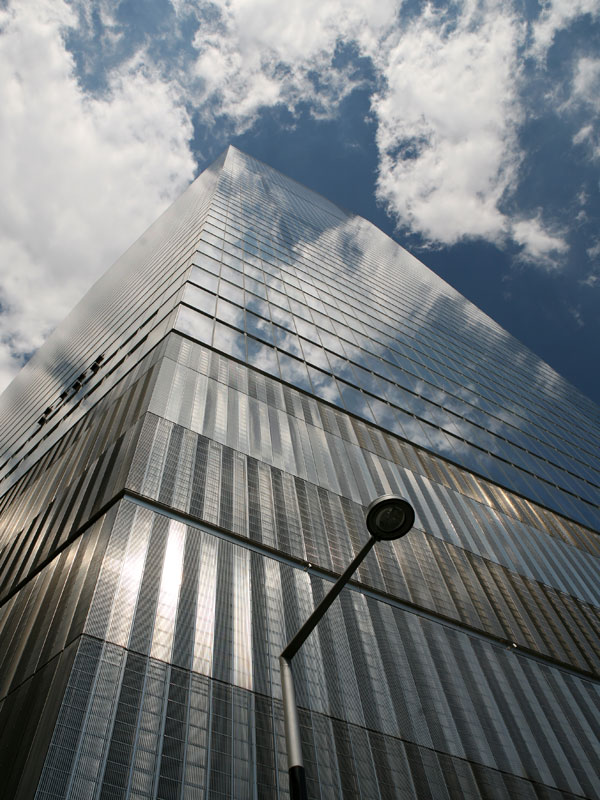Final Project
Annotated Bibliography
Matsys Design
http://matsysdesign.com
28 Apr. 2011
Matsys is a design studio started in 2004 by Andrew Kudless. He explores the relationship between biology, the built world and how to fabricate these using computation methods. I was immediately drawn to the Diploid lamp series which explores complex patterns that can be derived from forms found from nature – in this case honeycombs, scales and barnacles. It is very relevant to my studies since I am interested in the use of a simple repeating pattern to create a form that is so complex. Also I find it very interesting that none of the diploid lamps fabricated using glue at all!
James Carpenter Environmental Refractions by Sandro Marpillero
Princeton Architectural Press: NY, 2006
James Carpenter is an architect and sculptor, graduating from Rhode Island School of Design in 1972. He started with the development of new glass materials and worked with their properties to transform light and space. The work that I am particularly drawn to is his structural glass prisms which were installed in the Christian Theological Seminary’s Sweeney Chapel. The result of the bounced light and color onto the wall creates a very spiritual effect which I want to try to explore in my design.
Tazana Co., Ltd
http://www.tazana.com
28 Apr. 2011
Tazana is a company created by a Thai designer and materialist specialist company who believe that design is free for all to interpret making there no wrong or right design. “Tazana” in Thai means “attitude” and to them, it means that anyone can see something and recognize their own meaning from it. Most of their forms are derived from Thai culture and the craftsmanship, which i find these qualities very interesting. Also, I like the idea that most of their lamps start in a very flat form, but when the user lifts them, they reveal their true shape – it may be too early to think of packaging ideas, but this can also translate into a kinetic quality with the user.
Miho Konishi
http://aainter3-net.fromform.net/miho/
28 Apr 2011
Miho Konishi is a student exploring Light Form and her blog documents her works and findings. She works a lot with paper folding and how those forms can start to inform space. I draw inspiration from her works which many seem very similar to mine.
UnFolded: Paper in Design, Art, Architecture and Industry
Petra Schmidt and Nicola Stattmann
Birkhauser: Basel
This book is a collection of different artists’ work on the various designs using paper. The work ranges from architectural installations using paper waste material to simple laser cut rings out of card stock. The section I am interested in is Origami in Production and Computational Origami. It is fascinating to me underneath it all, origami is a very mathematical and logical art form.
Poul Henningson PH Artichoke Lamp
http://www.louispoulsen.com/en-us/Product/Pendants/PH%20Artichoke.aspx
29 Apr, 2011
This light fixture was originally designed for a restaurant in Copenhagen. It features 72 “leaves” supported by 12 steel arches and is a 360 degree glare free lamp. The leaves act as shields to the glare and the viewer never sees directly into the inner light source. This luminaire acts as a modern day chandelier and is a popular feature piece to use in many settings.
Dale Chihuly – Rio Delle Torreselle
http://www.chihuly.com/chihuly-over-venice-map-03_detail.aspx
30 Apr, 2011
In 1996 Chihuly – a Seattle glass artist – designed and created 14 chandelier pieces that were installed throughout the city of Venice in Italy. This chandelier was hung over the canal “of the little towers” reminding the viewer of the remnants of a tower that used to belong there connecting the viewer to the history of that particular site.
Tord Boontje
http://tordboontje.com
30 Apr, 2011
Tord Boontje is an artist/designer who draws ideas from nature, layering materials to entice the viewer. He believes that the idea of modernism can be complex instead of just streamlined and minimal and embraces the use of technology in his designs but not in a way that overpowers his work. I am very drawn to the Midsummer lamp. The use of the many layers work to diffuse the light and at the same time still keep the design airy and floaty.
Isamu Noguchi
http://www.noguchi.org/shop/history
3 May 2011
Noguchi was an artist in New York who integrated elements of Japanese art into his pieces. He is known widely for his lighting and paper lamp designs where he utilized traditional construction methods used in the small Japanese town of Gifu. He wanted to express the idea of weightlessness in his designs creating sculptural luminaries.
Aqua Creations Lighting
http://www.aquagallery.com/#/Lighting/Overview
3 May 2011
Ayala Serfaty is the leading designer for this lighting and architectural lighting company. Much of the forms of the light pieces mimic aquatic life and create a sort of ominous yet intriguing quality when placed in a room. I enjoy the odd shapes and form and the sculptural quality to the luminaire pieces.























